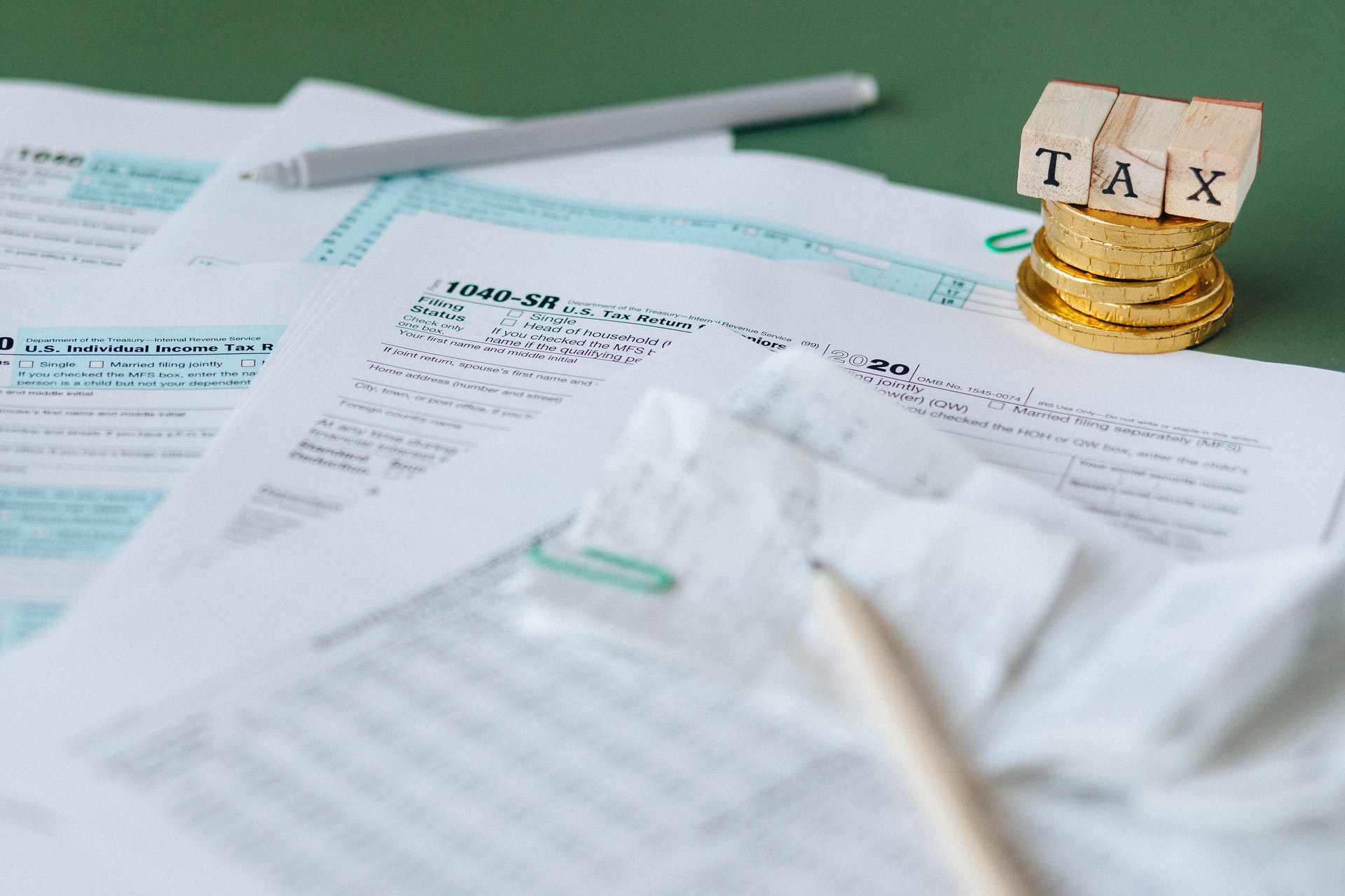Being able to use tax benefits and allowances to your advantage is what sets successful real estate investors apart from the amateurs. If you're thinking about entering the world of short-term rental investing, you're going to need to do your fair share of research and strategic planning to get there.
Among all the different strategies real estate investors can employ to boost their income and save money, cost segregation is probably one of the most crucial for maximizing tax savings and expanding your portfolio in a sustainable way.
But how can you know if you qualify for cost segregation and depreciation deductions, and how exactly does a cost segregation study work?
Here's all you need to know about this popular tax strategy and how to kickstart the cost segregation process for securing healthier finances and additional cash flow, without having a tax professional to take care of it!
What is Cost Segregation?
First things first, let's take a closer look at what cost segregation is and understand what the biggest benefits of employing this strategy are.
Cost segregation refers to the process of using accelerated depreciation deductions to simultaneously increase cash flow from your investment property and reduce the state income taxes and federal income tax you owe as part of your taxable income from rentals.
Real estate investors manage to get these generous tax cuts and income boosts by reclassifying the building components of their investment property into personal property or land improvements.
In practice, this means that the interior and exterior components of your building structure that would have depreciated over a longer period of time as commercial/residential assets can be classified as something else instead, dramatically reducing the time window of depreciation.
For example, classifying features of your short-term rental as land improvements instead of commercial or residential property features can accelerate depreciation from as much as 39 years to as little as 10 or 5 years, maximizing tax savings and boosting cash flow.
But let's go even deeper and take a closer look at all the benefits of conducting a cost segregation study for your property.
The Biggest Benefits of Cost Segregation
The biggest benefit of cost segregation revolves around the federal and state tax savings. Thanks to U.S. tax law, used personal property is eligible for a 100% bonus depreciation, meaning that investors can deduct a whopping 100% from their property tax in the first year alone.
Boosting your deductions in a short period of time (15, 10, or 5 years) means that your tax write-offs will be higher compared to a similar property that has not gone through a cost segregation study. This property will end up getting those deductions over a longer period of time (say, 27.5 years) instead.
On top of that, maximum tax savings means that you'll benefit from increased cash flow, as you won't be losing a huge chunk of your vacation rental income in taxes.
Standard depreciation already works in favor of investors, but by employing this strategic tax planning tool, you'll be guaranteed a boost in cash flow and a lot more financial freedom — the perfect recipe for a growing portfolio.
How Depreciation on a Commercial Property is Calculated
But what is depreciation, exactly?
Put simply, depreciation is a figure representing how much of a given asset's value has been used.
Every piece of furniture, plumbing, and electrical system in your property holds its own life expectancy, and as the asset gradually loses value, companies and individuals can spread out its costs to generate income. They can write off its value for tax purposes over its useful life.
Standard or straight-line depreciation allows you to write off a "loss" from your taxable income as the asset loses its value, allocating the same amount in deductions through each year following the purchase.
This is the simplest method the IRS employs to figure out an asset's depreciation, and it is calculated by dividing the depreciable amount by the total number of years.
But let's take a more concrete example: When you purchase a commercial property, this building asset will be entered into a fixed-asset system as a 39- or more likely 27.5-year property. Using the straight-line method, you'll be able to take fixed portions of the purchase as taxable income deductions each year for those 39 or 27.5 years, writing off the entire value at the end of the schedule.
When to Do a Cost Segregation Study
Now, if you were to employ tax professionals and engineers to carry out a cost segregation study within the first year of ownership instead, you'd be able to accelerate this depreciation and maximize your savings in return.
This doesn't mean that you necessarily have to carry out a cost segregation analysis right away-cost segregation studies can be done retroactively.
But getting all your taxes straight in the first year is the best course of action for investors who want to get ahead and reduce their tax liability from the get-go. This results in minimal income tax owed and a lot more cash flow to continue investing and improving their portfolio!
The Relationship Between Personal Property, Furniture, and Depreciation
Cost segregation studies analyze all the components that make up the building you own, from expensive chandeliers to the heating system, roof, and driveway, so they can assign a value to each.
All these different features will depreciate at different times, and when taken into consideration by the IRS, they will accelerate the total depreciation of your property. Most buildings will depreciate up to 90% in the span of 5 to 10 years when analyzed with a cost segregation study, as opposed to the decades it takes under the straight-line depreciation method.
And who wouldn't want bigger tax deductions in the early years of property ownership?
Now, vacation rental owners who are carrying out a cost segregation study have to keep in mind that all the furniture found in their property (yes, even the items that came with it at the point of sale!) will be considered a depreciating asset, alongside the purchase price.
This means that while you'll be looking at tax write-offs of as much as $20,000 a year for straight-line depreciation, a quality cost segregation study will have you depreciate even faster, within as little as five years!
The purchase price of each item you put in your property after the sale will be taken into consideration when you do a cost segregation analysis, so make sure you highlight all the amenities found in your home as well as fixtures, flooring, and land improvement components.
What Does 100% Bonus Depreciation Mean?
Standard depreciation has been around for a long time, and it's always been one of the most advantageous tax deductions for investors... until the latest development in real estate depreciation.
In 2017, a new landlord-friendly law called the Tax Cuts and Jobs Act introduced bonus depreciation, the most generous tax cut to date for property owners and investors, allowing used personal property placed in service after 9/27/17 to be eligible for a 100% deduction.
Suddenly, investors can qualify for an enormous tax deduction in their very first year of ownership, as they can take 100% of the accelerated depreciation as a first-year deduction and ultimately shave off 20% to 30% of the purchase price in that same year!
How to Avoid Income Tax Liability
So, how can you make sure you're also reducing income tax liability with cost segregation?
If you operate in the world of short-term rentals, you could be eligible for taxable income deductions if you can prove you actively work on your investment property for at least 750 hours a year.
While this is not the best option for passive investors who work on their property management remotely and rely on vacation rentals as a source of passive income, investors who do spend time working on their property management in person can have their short-term rental income qualify as active income — with all the tax benefits to follow.
If you were to apply your cost segregation deductions to your ordinary income, you could potentially write off a huge chunk of the taxes you owe without working on a residential rental property full-time!
So, start tracking all the hours you spend on managing and brokering throughout the year and tweak your schedule to qualify for these generous active income deductions — it will all be worth it in the end.
Now, these are just a few of the many helpful tips we have on how to use cost segregation and depreciation to your advantage. If you want to take an even deeper look at how the process works and how you can make it work for you, why not head over to our podcast for more nuggets of wisdom?
Cost segregation is a complex process, and while depreciation holds a lot of benefits for many investors, it might not necessarily be the right choice for your situation and business goals... so let us break it all down for you so you can come to your own conclusions!
Educating yourself on all things short-term rental investing can help you elevate your portfolio and generate passive wealth the easy way — get in touch with the experts to get your journey started.



